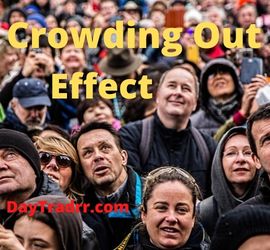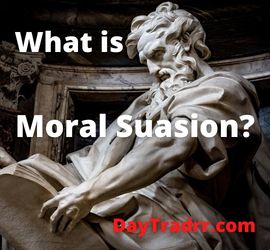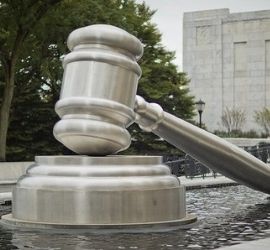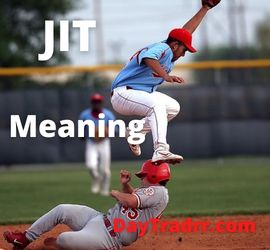What Is the Crowding Out Effect?
 The crowding out effect is an economic premise asserting that government spending competes with, thereby reducing or eliminating private spending. When governments have budget deficits, they usually have to borrow money to cover them. When governments borrow, they compete with everyone else in the economy for the limited quantity of accessible savings. The real interest rate rises as a result of this rivalry, while private investment falls. Crowding out is the term for this phenomenon.
The crowding out effect is an economic premise asserting that government spending competes with, thereby reducing or eliminating private spending. When governments have budget deficits, they usually have to borrow money to cover them. When governments borrow, they compete with everyone else in the economy for the limited quantity of accessible savings. The real interest rate rises as a result of this rivalry, while private investment falls. Crowding out is the term for this phenomenon.
The majority of economists concur that deficit spending is not a problem in and of itself. In reality, during severe recessions, deficit spending may be required. However, most economists understand that deficits and debts may have long-term effects. Because of the lower investment spending, a country’s capital stock will not increase as quickly. As a result, crowding out has the potential to diminish a country’s future productivity.
Crowding Out Effect – A Closer Look
A prevalent example of crowding out occurs when a major government, such as the United States, raises its borrowing. In turn, this sets in motion a series of events that causes private-sector expenditure to be cut. The sheer magnitude of this form of borrowing can result in significant increases in the real interest rate. Ultimately, consuming the economy’s lending capacity and preventing enterprises from undertaking capital expenditures. Companies frequently finance capital investment projects in part or wholly. However, they are now discouraged from doing so since the cost of borrowing money has increased. In effect, formerly feasible projects supported through loans become cost-prohibitive.
The crowding out effect has been debated in various ways for over a century. People perceived that capital was finite and confined to specific nations throughout much of this period. This was partly owing to lesser quantities of international commerce than exist now. In this context, a direct correlation could be made. Increased taxes for public works projects and public expenditure were directly related to a decline in the capacity for private spending within a specific country. Measurably, this was because less money was available.
Governments usually pay for deficit spending by borrowing
Crowding Out Long-term Effects
Long-term crowding out has the potential to stifle capital accumulation. Remember that firms acquire new equipment as part of their investment spending. Also, they typically borrow money when purchasing new equipment. As a result, higher interest rates lead to less borrowing. And, less borrowing leads to fewer purchases of equipment or capital expenditures. Therefore, it stands to reason there will be less capital accumulation if there is less borrowing.
In the long run, more capital improves an economy’s ability to generate products and services. Long-term governmental deficit spending can push out private capital investment. A possible long-run consequence of deficits and indebtedness is an overall reduced pace of economic development.
The Crowding Out Effect vs. Crowding In
Academics and economists argue that in a modern economy that is far below capacity circumstances are different. Government borrowing may actually raise demand by creating jobs, thereby increasing private spending. “Crowding in” is a term used to describe this process. Crowding in as a policy has gained traction among economists in recent years. For example, it was discovered that huge federal government expenditure on bonds and other assets during the Great Recession of 2007–2009 actually reduced interest rates.
There are two sets of policy tools used to foster recovery following recessions: monetary policy and fiscal policy. Monetary policy, consisting of actions taken by the Federal Reserve, is used to keep interest rates low and reduce unemployment during and after a recession. Fiscal policy includes various forms of government spending and tax cuts enacted by Congress. Following a recession, both sets of policy tools can be used to increase demand, thereby raising output and more quickly returning the economy to pre-recession conditions.
To be most effective, it is crucial that the stimulus be expeditious. In the Great Recession, a portion of the fiscal policy response occurred automatically within preexisting programs. These programs are called “automatic stabilizers” because they provide immediate stimulus during a recession without requiring action from Congress. For this reason, automatic stabilizers like unemployment insurance (UI), the Supplemental Nutrition Assistance Program (SNAP, formerly Food Stamps), and Medicaid—in addition to automatic stabilization associated with tax revenue—are particularly valuable. (Source: brookings.edu)
Types of Crowding Out Effects
Economic
Increased government borrowing and spending cause a decline in private expenditure. This is what’s known as the economic crowding-out effect. Businesses and people borrow and spend less. This is because government borrowing raises the cost of private loans and sucks up cash that could be used elsewhere. Reduced capital investment can partially counterbalance the benefits of government borrowing. For example, benefits associated with economic stimulation, although this is only likely when the economy is working at full capacity. When the economy falls below capacity, government stimulus is potentially more effective in this regard. However, if this is the case, an economic downturn might ensue. This would result in declining tax revenues and forcing the government to borrow even more money. Ultimately, leading to a vicious cycle of borrowing and crowding out.
Infrastructure
When a government borrows or spends money to create infrastructures, it is known as infrastructure crowding-out. Spending on these initiatives by the federal government potentially inhibits investment from local governments or private groups. Certain types of companies may be crowded out by the infrastructure itself. Companies supplying the manufacturing sector, for example, might be forced to relocate as a result of government investment in an airport nearby. Another kind of crowding out can occur as a result of government-funded infrastructure development initiatives. It can make a region of the market unappealing or even unprofitable for the private sector to operate in.
Social Welfare
The social welfare crowding-out effect argues that government expenditure on social programs affects philanthropic giving. Paying taxes to a government that delivers social programs may appear to undercut the aim of individual donations or volunteering. Individuals may also believe that having already donated to a worthy cause, contributing to charity has less influence. The evidence for a social welfare crowding-out effect is contradictory. Some studies show a slight effect, while others show no effect or perhaps the reverse.
Nevertheless, when governments raise taxes in order to introduce or expand welfare programs, individuals and businesses are left with less discretionary income. As a result, this can reduce charitable contributions. In this respect, public sector expenditures for social welfare can reduce private-sector donations for social welfare. The net effect is to offset the government’s spending on those same causes.
Healthcare
Government expenditures expanding public insurance compete with the role of private health insurance businesses in the healthcare industry. Individuals see less of a need for private insurance when the government spends more on health care. According to the argument, government healthcare expenditures might cause firms to drop employee insurance. This would result in fewer people using it and making it more expensive. Despite increasing government expenditure, this might actually result in a drop in the overall number of covered persons.
For example, establishing or extending public health insurance programs such as Medicare. As a consequence, it may encourage those who have private insurance to switch to the public option. Private health insurance firms may then be forced to raise prices as a result of fewer consumers and a smaller risk pool. As the cycle perpetuates, there are further decreases in private coverage.
Crowding Out Effect Example
Suppose Johnson & Jackson Inc. is planning a new capital project. The firm projects a cost of $10 million with a return of $12 million. The projected interest rate on its loans is 3.33% and the firm anticipates earning $2 million in net income. However, due to a $1 trillion dollar government stimulus package to address the pandemic, interest rates are expected to jump to 5%.
At a 5% interest rate, the firm’s borrowing costs increase by 50%. As a result, its profit model shifts. The firm estimates that it will now need to spend over $11 million on the project in order to make the same $12 million in returns. Further, J&J Inc has a policy not to pursue projects with less than a 20% return on investment. As a result, the company decides that it is better off canceling: the project and pursuing other options.
Up Next: What is a Stash Party?

To join a party, visit the Stash web page on party day, login, and tap Claim stock. If you’re not a Stasher at the time, you can still reserve your stock with just your email address. Then, follow the instructions to complete your Stash account and claim your stock! To be eligible to receive a Stock Reward you must open a personal investment account advised by Stash that is in good standing with a valid email address.




